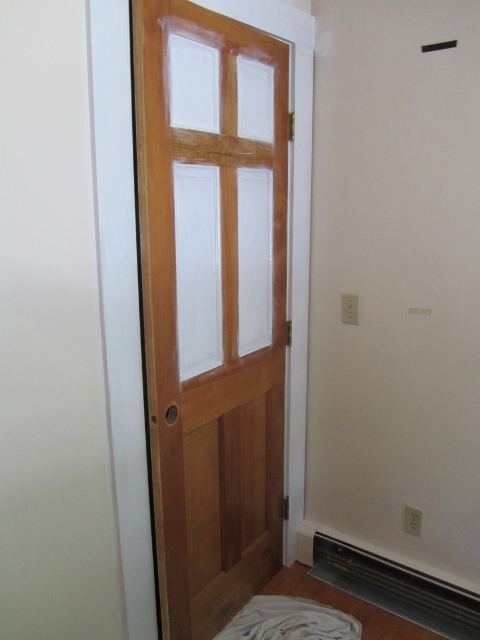How To Paint Over Polyurethane
Applying Wil-Bond:
• Saturate a rag with Wil-Bond and rub over the surface until the rag “pulls” or “drags.”
• Change the rag frequently as it picks up grease and dirt.
• Promptly dispose of these rags in a metal container. [They are a fire hazard]
• On heavily waxed surfaces use #00 Steel Wood saturated with Wil-Bond.
• Treat as much surface as you can prime in 30 minutes. The “tact” will only last that long.
Tip: Use the 3M green scrub pads to apply the Wil-Bond to contoured and detailed areas, such as moldings and window mullions.
Tip: Use a plastic pail or make one by cutting the top off a clean recycled container. Pour the Wil-Bond in your container and dip the green pad in to saturate.
Applying Primer
Make sure you have all of your priming supplies set up and ready to go. [oil paint, brush, paint thinner] Remember once you start applying the Wil-Bond chemical you have 30 minutes to apply primer.
Tip: Work in a left to right fashion and in a methodical manner.
For example:
- Do one side of a door at a time,
- One window sash at a time.
- Treat and prime one wall of baseboard at a time. [30 minutes]
9. Apply primer to woodwork: apply the oil based primer with a paint brush suitable for oil based paints. Prime all of the treated woodwork
10. Prime all of the surfaces you have applied Wil-Bond to with-in 30 minutes.
11. Apply Wil-Bond to a new area and prime.
12. Continue in this fashion until your project is primed.
Tip: You will need to keep your primer and paint brush handy.























